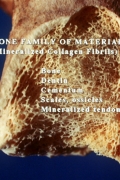Small ceramic flasks with thick walls and narrow openings were produced in Phoenicia. These flasks were common in Phoenicia, the southern Levant and Cyprus in the early Iron Age, namely in the 11th–mid-9th centuries BCE. Their shape, size, decoration and find-contexts suggest that they contained some precious materials and were part of a commercial network operating in these regions. We analyzed the lipid contents of 27 such containers from 5 archaeological sites in Israel using gas chromatography coupled with mass spectrometry (GC-MS).





